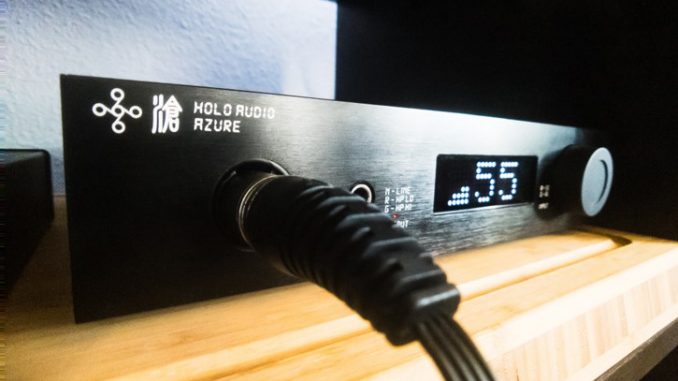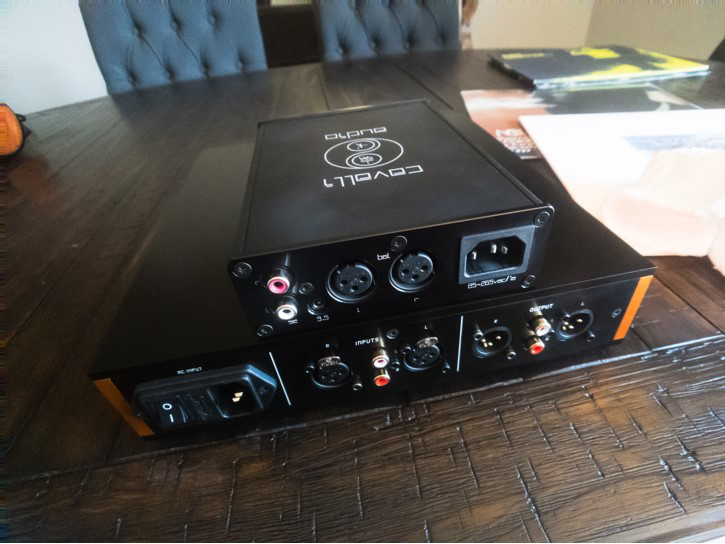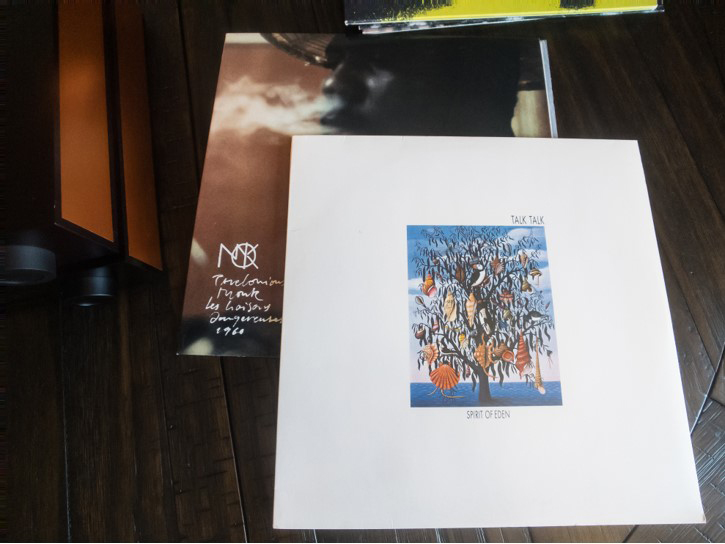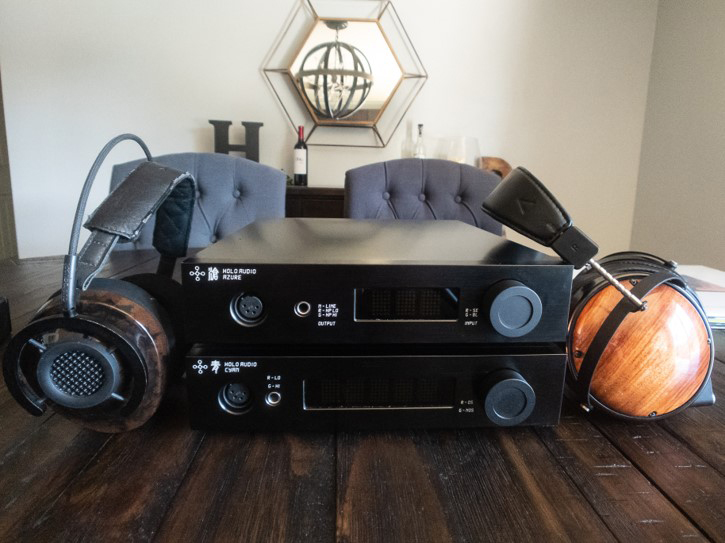
What kind of idea are you?
The Analyst? Are you the detail hound looking to plumb the depths of your favorite recordings? Or maybe the Sensualist? You’re looking for a dynamic, captivating and more physical listening experience? While no one is any one thing and we all likely look for a balance of talents, I certainly fall into this second group. Thankfully, the personal audio market is teeming with options for everyone.
In fact, keeping up in the head-fi space can be daunting—things are moving fast. The resolution war has raged on for years. Planar magnetic and electrostatic headphones dominate the news for the over-ear category, and IEM’s and portable DAPs, DACs and amps are everywhere you look. For the high-end dynamic driver crowd, Focal, Fostex and ZMF, along with Sony, and Sennheiser all continue to develop new products. Not an exhaustive list, of course. Point is, regardless of your personal sound and style, it’s an exciting time for headphone enthusiasts. This could also be a potentially bewildering time if you’re preferences aren’t in step with the mainstream. And if that’s not enough, new headamps are arriving right along side their partners, and here too are a dizzying number of options.

Where should we start?
I have been intrigued by HoloAudio’s reception over the past couple years. The Spring line of DACs has been very well reviewed by critics and enthusiasts alike. In fact, both Michael Lavorgna (Spring DAC L3) and Alex Halberstadt (Spring DAC L1) reviewed these DACs in 2017. So when the opportunity came to contribute to TM, HoloAudio was among those at the top of my list.
Perhaps less well known as the Spring DACs, HoloAudio’s more affordable Cyan DAC/headphone amp and Azure dedicated headphone amp/preamp are in focus for today. I am highlighting the Azure in this report, but both offer great performance in identical desktop friendly designs. The Cyan (PCM only with headamp US$1299)—in my units configuration, a NOS discrete resistor ladder DAC—is deserving of it’s own stand in the spotlight. This entry level unit differs from the more sophisticated Spring line, and for one, lacks the additional adjustment ladder network of the more costly Spring DACs.
HoloAudio’s US distributor is Kitsune HiFi or HoloAudioUSA. Tim and Dawn Connor run Kitsune HiFi—pronounced KIT-SOO-NAY—from Lynnwood, Washington. I’d like to thank them for the Azure review unit. Tim was available for any and all questions I had during my time with the Azure. When pressed for their own ideas of which listeners this amp may be for, Tim stated that they expect the resolution freaks and those with very resolving headphones like the Focal Utopia or Sennheiser HD800/S will really enjoy the amp. I suspect that’s true, though there’s more here than that description offers.

The Azure (US$1599) is a fully discrete balanced/differential headphone amp and preamp. It has 8 discrete modules, one each for buffering and amplification for all 4 (2×2) channels. It provides one pair each of both RCA and XLR inputs and outputs. The volume is managed by a relay controlled 64-step attenuator, providing 1db steps. The IEC input and power switch sit at the left edge of the rear of the unit.

It’s adjustable/defeatable digital display shows volume levels when in normal operating mode. It will temporarily display options for inputs and outputs based on your selections made via the volume knob or the aluminum remote. I like the simple aluminum remote—it worked fine. HoloAudio uses the same remote for the Cyan DAC, so the Mode button has no function for the Azure. There is an LED indicator confirming your output choice, with a description of each color representing the output on the front plate. I found the highest display brightness to be distracting, and in fact this unit was set to the lowest brightness when it landed here. The HoloAudio amps do not ship with a power cord, which likely isn’t an issue for most, but is noteworthy. This reduces costs and they expect most are throwing the stock cables out and using higher quality cables at home—true for me. The unit was double-boxed and well prepared for global shipping. Newly purchased units ship direct from the manufacturer.
I spent the majority of my time with the amp using the Cyan DAC as my source for streaming Tidal via Roon. The rest of the time I’d spin vinyl on my Clearaudio table with Satisfy black tonearm and the Ortofon 2M Black cartridge with the Parks Audio Budgie 6922 on preamp duty. Audioquest MacKenzie XLR tied the Cyan and Azure, and Anticables USB and digital RCA cables tethered these to my Sonore microrendu (w/Uptone LPS 1.2) and Schiit Eitr via the Cyan’s COAX input. I preferred this to USB, so my notes here are based on this configuration, and focus only on the headphone amps performance. I didn’t test the preamp. I drove the Audeze LCD-XC (20ohm – 95db), the slightly more laid back closed headphone in that family for the majority of the time, and switched in a pair of more budget (and neck) friendly headphones later.
The short of it—the Azure is an excellent headphone amp. I love it in my system.
Will you love it?
It depends on how you listen and with what. I dig tubes, though run solid state amps too. My primary tube headamp is a 45 driven SET amp built by Matt Formanek of Toolshed Amps in Milwaukee, Wisconsin. I love the immediacy, nuance, tone and dimension, though there’s always a compromise.

I compared the Azure with the Cyan’s built in amp and the Cavalli Audio Liquid Carbon amp for some perspective.
Cavalli Audio are well known in the Head-Fi community, and were engaging with DIY’ers and forum denizens beginning in 2000. They built high end (and costly) headphone amplifiers like the Liquid Lightning and Liquid Gold. These amps are among those revered by enthusiasts seeking the summit of head-fi. The Liquid Carbon was designed in recent years as a more affordable (final price US$799) and transportable taste of the Cavalli sound, and was their least expensive amp. Sadly, Cavalli closed their doors in October 2017, but their amps can be found used online. It’s the only other balanced amp I have here, so despite having been roughly half the cost of the Azure we’ll stack them against one another. The two HoloAudio amps output 1600mw @32ohms in balanced mode, while the Cavalli outputs 1500mw @50ohms balanced.
I listened to a lot of music, everything from Stravinsky’s Firebird (Dorati/LSO on Tidal and vinyl) to Fiona Apple, Kamikaze Ground Crew, Soundgarden, Far, Kirk Knuffke, Klangstof, Coltrane and Shelly Manne. The Azure was a pleasure regardless of the music played.

Talk Talk’s Spirit of Eden is a landmark record for me. I discovered the band in my teens and their music and artistic evolution remain an inspiration. It’s also a complex and layered recording, so I cue it up often when listening critically. With lesser systems this record can sound dry, flat, and harsh. I listened to both the Tidal version and my Ba Da Bing! vinyl reissue.

The Cavalli is the most intimate of the three. It paints with less saturated colors, and is mid-centric in comparison to the HoloAudio amps. It’s less illuminated, and a tad drier in overall delivery. When amps lean more toward a resolving, dry and lean sound Mark Hollis’ voice is a ghostly image that swims in all the effects on the track “I Believe in You”. The Liquid Carbon lends his voice more presence and weight and brings it forward out of the mix. Nice. The stage width is compressed in comparison, there’s less space between instruments. Bass is solid and present though with the least sub bass of the three amps. This draws more focus to the instruments and voices. The HoloAudio deliver more vivid color. I like that with the Cavalli all the reverb and delay fill in nicely without swamping the stage. The chorus of the track “Desire” is drier, the cymbals less splashy. Decays quicker. The Liquid Carbon lands between the two amps in resolution, though is quite close to the Cyan. I think if I added a third character (Sensualist, Analyst) here, it would be the Archivist. The Cavalli is more the engaging documentary next to the vivid feature film of the Azure.

The Cyan adds a touch more high frequency energy to the mix, compared to the Cavalli. Shakers and acoustic guitar string attack shine more in comparison. More vivid colors. Wider stage. Less separation than the Azure, where colors, reverb and delay blend. Hollis’ voice is more submerged in the effects. It’s wetter. The delay on Hollis’ voice in “I Believe in You” is very slightly more defined. The HoloAudio amps are similar in character. The Cyan is less resolving. The DAC tends to slightly emphasize shimmer and sibilance, though it’s less audible here, and more so with the resolving Azure. The overall result is a slight blurring of the Cyan’s image, which depending on how you listen and with which ‘phones, may not be a bad thing. This makes the Cyan more coherent, though separation remains very good. The stage is a bit thinner and shallow. The micro dynamics are good on the Cyan, but the Azure bests it.

The Azure does everything better. It is very resolving and better separates instruments. It’s more refined. Tonal color and weight are more accurate. Though the two HoloAudio amps have similar power ratings, I felt that the Azure had a bit more drive. The Azure delivers more detail, dimension and nuance. The result is a more realistic, dynamic and engaging sound. I heard more intricate details—maybe more than I need?—yet they were appropriately balanced, while the focus remained on the instruments and voices. So, more detail but not by way of hyper high frequencies as the tonal balance remained.
I spent some time driving my original Audioquest Nighthawks (using the single-ended outputs) with all three amps. If you own a pair and haven’t tested the different ear pads Audioquest released with the Carbon versions, you should, though finding some now may be difficult. I was surprised by how much I enjoyed them with the micro suede pads. These pads reduce the upper bass bloom, which results in a more open sounding mid-range, retaining good bass presence.

The Nighthawk and the Azure are a very nice pairing. Dare I say it’s the best Nighthawk pairing yet here at home. The Azure’s control in the low end, drive, stage width, high frequency extension and resolution are a very good complement to the Nighthawk’s shadier character, beautiful mid-range and sensitivity. Despite their limitations, the Nighthawk’s tone and dynamics are just right for me. I love paper drivers, like those in my Altec’s, and the Nighthawk do a similar thing for me. I’m feeling more micro dynamic hop from the Azure reminding me that the Nighthawks are responsive. Dimly lit but nimble.
I’ve started daydreaming about Audioquest building a $1500 version of the Nighthawk with that bio-dynamic driver—that could be great fun. I’ll be running my pair balanced soon, so we’ll see what that experiment yields. Looking back at my notes, I had a spooky real moment playing Frank Sinatra’s Only the Lonely with this setup. The LCD-XC are tremendous headphones, but they don’t do lifelike tone like those bio-dynamics in the Nighthawk.

What kind of amp is the Azure?
The Azure is fast, resolving, far reaching in the frequency extremes, yet maintains a convincingly natural tonal color, texture and mass. Micro-dynamics are excellent, and not at the expense of the macro. The stage is wide, cleanly layered, with a remarkable depth and dimensionality. The center of gravity is low—it’s not bright—I found it is quite balanced across the spectrum. It is digital tomb quiet, and handles nuance and harmonic complexity with more delicacy than I expected. A max of 1600mw (@32ohms) output in balanced mode was plenty for my easily driven headphones. Even at higher volume, macro swings were impactful and I didn’t sense any strain from the amp. The LCD-XC are easily driven and feel like they’ve no limits. That said, I preferred listening at medium to low levels. The Azure won’t be an ideal pairing with the toughest loads. Also, while the single-ended outputs sounded very good, I think you’re choosing this amp for it’s balanced design—you are tossing out much of it’s potential running it single-ended.
It’s not going to match the performance of some more expensive amps. No. That said, I did not expect this level of sophistication, or the captivating balance of brawn and finesse. Again, in this system, I love it. If you are a resolution hound, the Azure will deliver that and more. I (a tone freak) am finding that while it is more resolving than any other amp I have here, it does balance that talent with others that I prioritize higher—realistic tone, dynamics, speed, etc.
The ultimate measure of a system is it’s ability to plug me into the less quantifiable experience of listening. I had many moments with the Azure in my system when I was riding that wave. Back to Sinatra’s Only the Lonely, when the orchestra swells and he’s belting it out about 2 minutes into “Ebb Tide”, my chest swelled along with the song. I do like Sinatra, though not an avid fan, and am acquainted with the song but not intimately. I point this out because despite that this system lifted me out of my chair for a moment. The LCD-XC do big dynamic swings seemingly effortlessly, and the Azure followed suit. The amp rocked balls when called for, and similarly delivered intimate small group jazz at all volume levels without losing composure or disturbing the groove.
I highly recommend an audition.
Thanks for listening.
HoloAudio US Distributor: Kitsune HiFi – HoloAudio USA
HoloAudio Cyan DAC/headphone amp
Price: $1,299.00 as reviewed
Specifications
HoloAudio Azure Headphone Amplifier
Price: $1,699.00
Specifications

